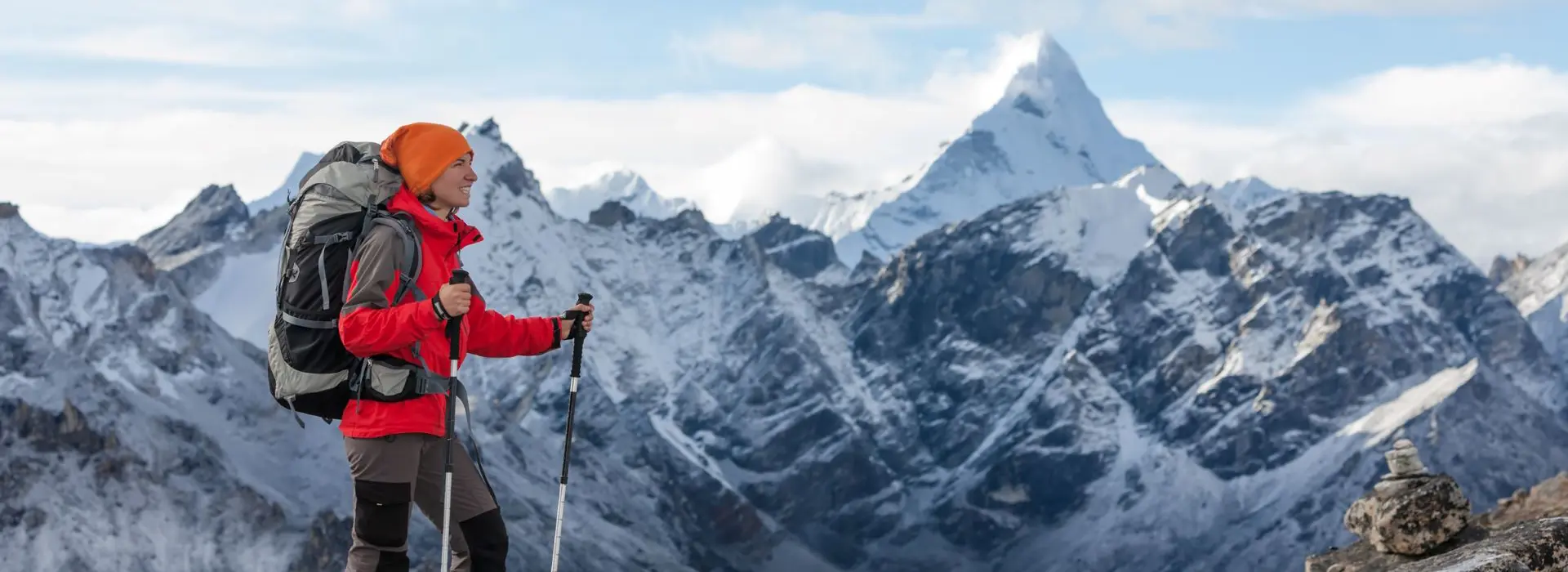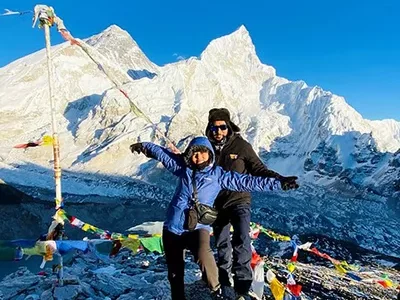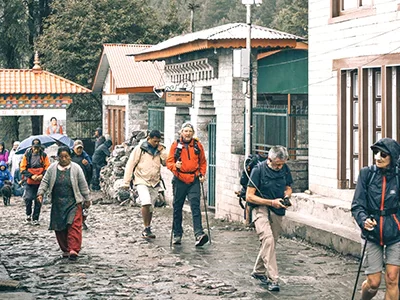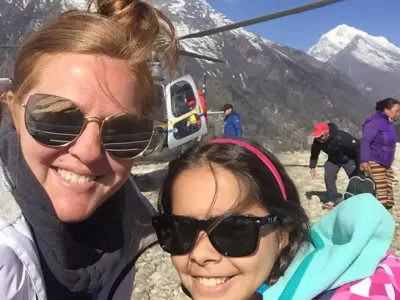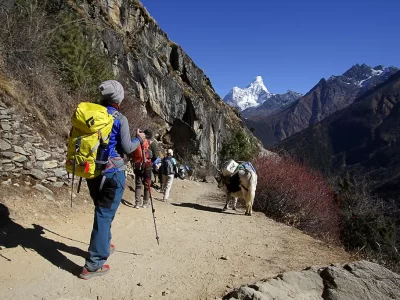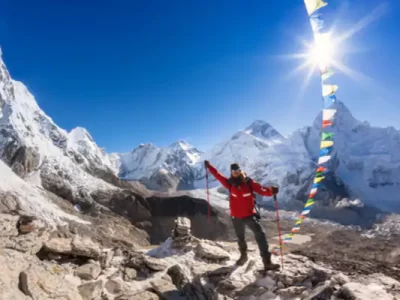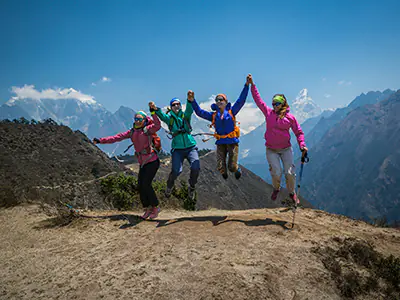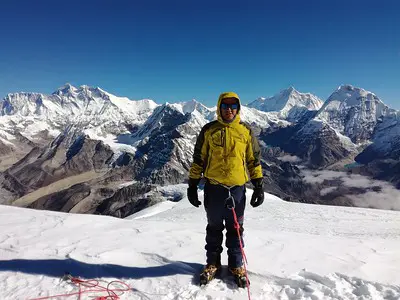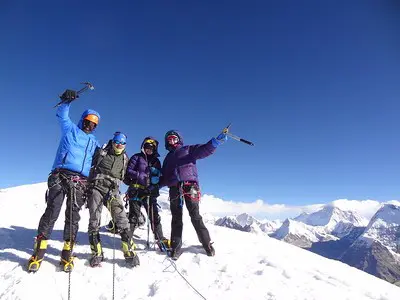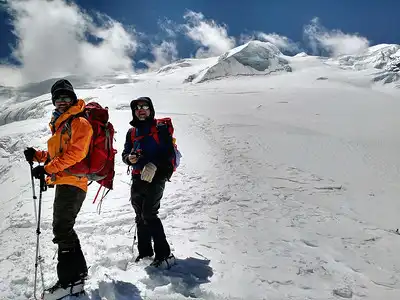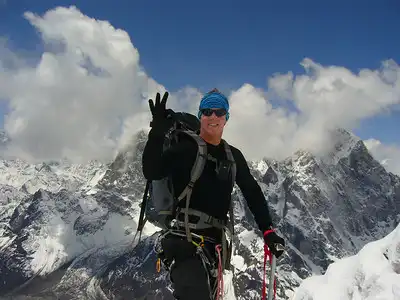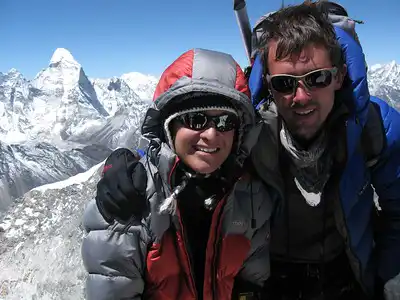The trek to Mount Everest Base Camp ranks as one of the most iconic and adventurous treks in the world. Located in the mountains of Nepal, you will encounter stunning views and a huge sense of fulfillment when you arrive at the foot of the tallest mountain on Earth. To be well-prepared for this difficult trek, trekkers need to have an understanding of how far they’ll be walking – the Everest Base Camp Trek Distance.

Starting the trek in Lukla, a small town reached after a thrilling short flight from Kathmandu. From here, the path to Everest Base Camp follows, and trekkers cross various landscapes, from lush rhododendron woods to icy glacier moraines. Many stop at the base camp itself, but some go further up Kala Patthar for an even more unforgettable view of the world’s highest peak. This round trip covers approximately 130 kilometers, and therefore, one must have a clear idea about the EBC trek distance while planning the itinerary and preparing oneself physically for it.
While determining how far Everest Base Camp is from Lukla or any other starting point may seem straightforward, given modern maps and technology, the actual situation on the ground can be quite different. A variety of factors, such as altitude gain over time or the type of terrain covered, also matter just as much as the number of kilometers traveled alone.
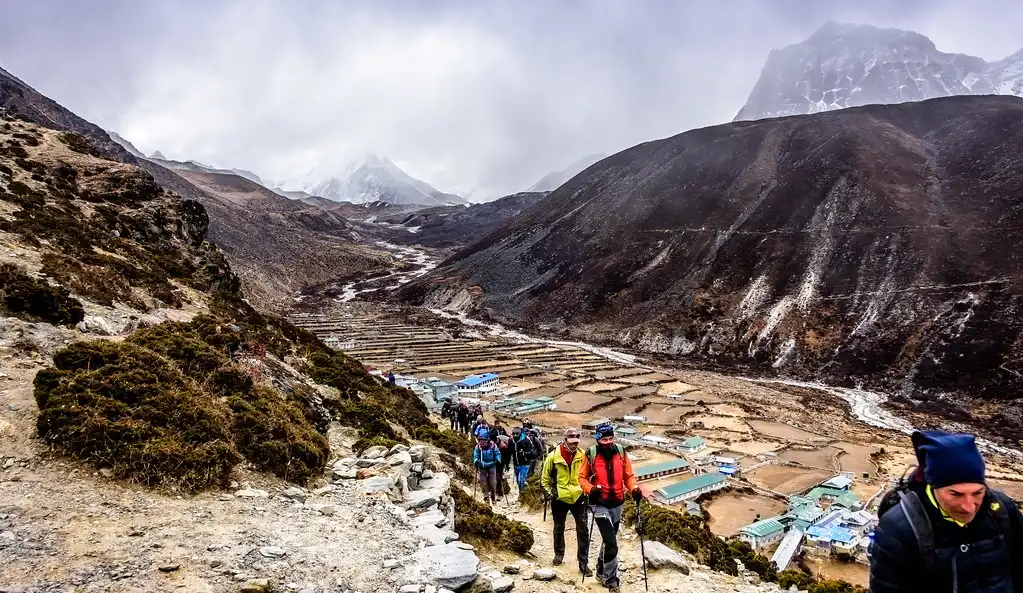
Consequently, ‘distance’ should mean more than just ‘number of kilometers’ when talking about distances between places along famous trekking routes in Nepal like the Everest Base Camp trekking route, which has plenty of ascents and descents via river valleys and high passes resulting into different daily walking distances covered by trekkers understanding thoroughly this base camp trek distance is therefore very important since it has an impact on daily walking distances.
Everest Base Camp Trek
Luxury Everest Base Camp Trek
Everest Base Camp Trek with Helicopter Return
Distance and Duration
During the Everest Base Camp Trek, it typically takes about 5 to 6 hours daily to travel from one destination to another. This duration highlights the trek’s challenges. Trekkers usually cover a distance of 13 to 15 kilometers each day.
Moreover, the total length of the Everest Base Camp Trek is approximately 130 kilometers. With proper preparation and knowledge of the necessary equipment and gear, you will find the trek manageable.
1. Lukla to Phakding

The initial leg of the Everest Base Camp trek takes hikers from Lukla, starting at an elevation of 9,100 feet (approximately 2,800 meters), to Phakding, which lies at 8,563 feet (about 2,610 meters). This downward trek offers a gentle introduction, helping trekkers ease into the trek ahead.
Oxygen Levels on the Trail
Trekkers begin their trek in Lukla, where the oxygen is at 72% of sea level concentration. As they descend to Phakding, the oxygen level increases slightly to 74%, aiding their acclimatization to the high-altitude environment of the Himalayas.
Covering Distance and Time
Trekkers cover a distance of 4.66 miles (7.5 kilometers) on this first segment of the trek, typically spending about three hours to complete it. This manageable start paves the way for the challenges ahead as they continue their trek to Everest Base Camp.
2. Phakding to Namche Bazaar
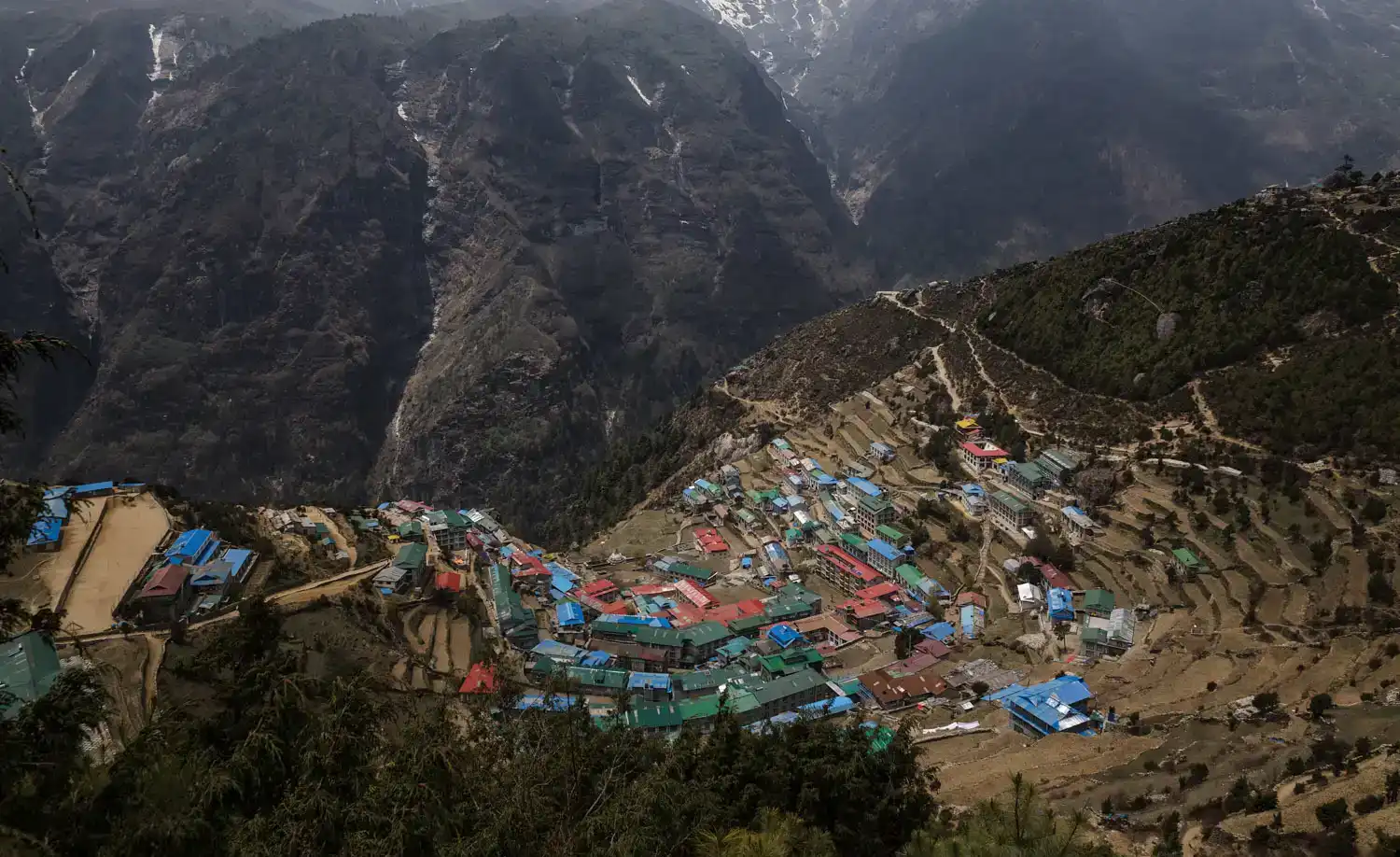
The trek from Phakding to Namche Bazaar involves a significant ascent, starting at an elevation of 8,563 feet (2,610 meters) and rising to 11,286 feet (3,440 meters) upon reaching Namche. This leg of the trek introduces hikers to the challenges of navigating higher altitudes.
Oxygen Levels
The trek begins in Phakding, where the oxygen is around 74% of sea level concentrations. As trekkers ascend to Namche Bazaar, the oxygen level drops to 70%. This decrease highlights the need for careful acclimatization, with Namche serving as a critical stop for adapting to the thinner air.
Distance and Time
Trekkers cover an 8-kilometer (5-mile) trail that typically takes about six hours to complete, influenced by individual pace and the need for acclimatization. The route to Namche is not only scenic but also physically demanding, challenging trekkers with steeper slopes and tougher terrain.
3. Namche Bazaar to Deboche/Tengboche
The trek continues as trekkers climb from Namche Bazaar, positioned at 11,290 feet (3,440 meters), to either Deboche or Tengboche, located at 12,687 feet (3,867 meters).

This climb adds 1,397 feet (427 meters) in elevation, introducing hikers to increasingly demanding high-altitude conditions.
Oxygen Levels
During the ascent from Namche Bazaar to Deboche/Tengboche, oxygen levels drop from 67% to 64% of what they would be at sea level. This drop in oxygen underscores the critical need for proper acclimatization, as thinner air makes breathing more challenging.
Covering Distance and Managing Time
Trekkers cover about 5.72 miles (9.2 kilometers) from Namche Bazaar to Deboche or Tengboche, typically spending around six hours on this part of the trek. This segment is crucial for acclimatizing and offers breathtaking views of the Himalayas, balancing physical demands with visual rewards.
4. Everest Base Camp Trek Distance from Tengboche/Deboche to Dingboche
The trek progresses as trekkers ascend from Tengboche or Deboche, with an elevation starting at 12,697 feet (3,870 meters), to reach Dingboche, situated at 14,469 feet (4,410 meters).
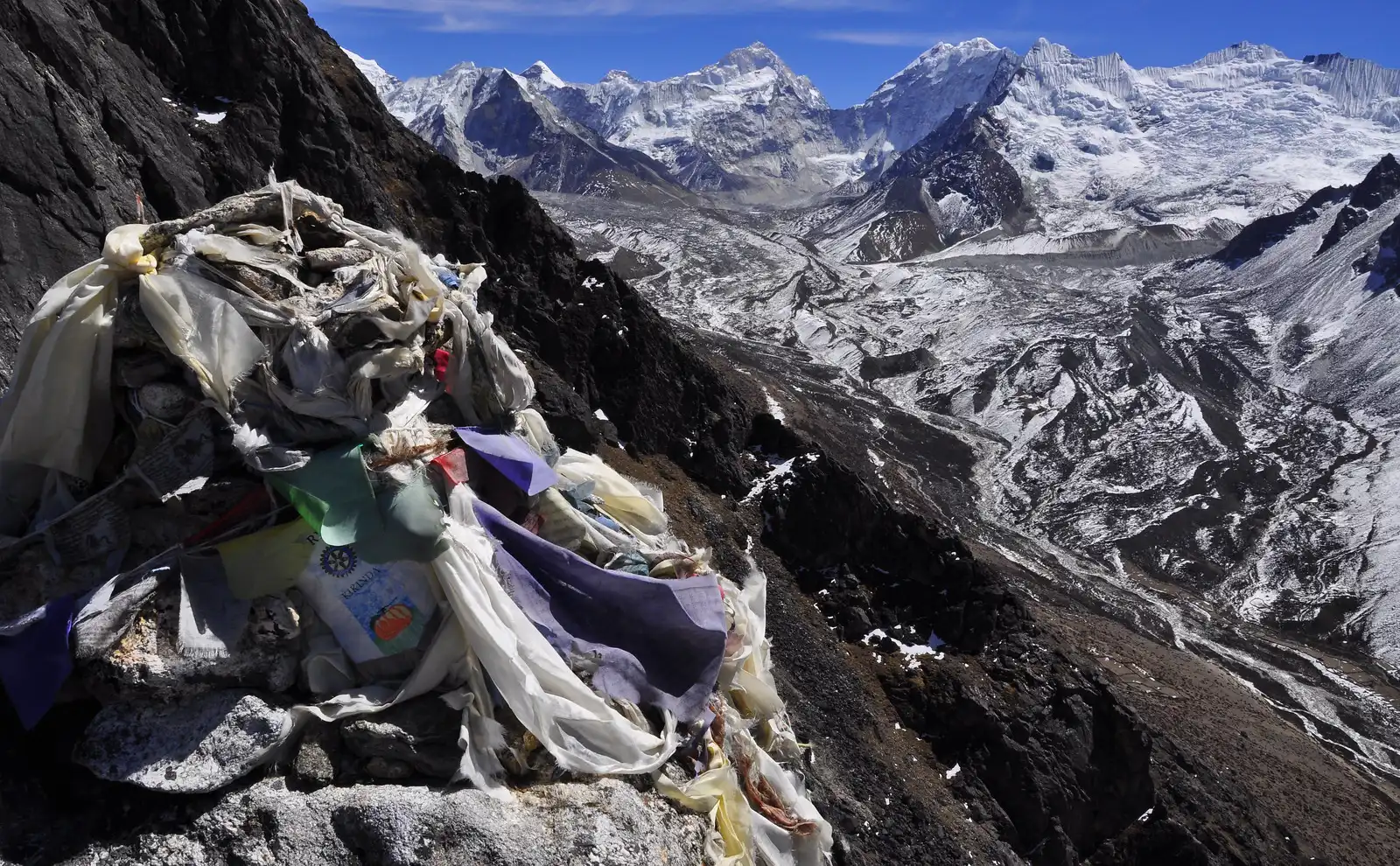
This trek adds 1,772 feet (540 meters) in elevation, pushing into even more challenging and elevated terrains.
Oxygen Levels
Oxygen levels drop from 64% of sea level at Tengboche/Deboche to 59% at Dingboche. This notable decrease in oxygen concentration highlights the growing need for acclimatization, as thinner air makes breathing increasingly difficult.
Distance and Time
The route covers 6.71 miles (10.8 kilometers) and generally takes about 5 hours and 30 minutes to complete. This stage is essential for adjusting to higher altitudes. It offers trekkers the opportunity to experience the stark, rugged beauty of the high Himalayas, testing physical limits while presenting remarkable views.
5. Dingboche to Lobuche
Trekkers ascend from Dingboche to Lobuche, climbing from an elevation of 14,469 feet (4,410 meters) to 16,109 feet (4,910 meters). This 4.9-mile (7.9-kilometer) section includes a total elevation gain of 2,008 feet (612 meters) with a net elevation increase of 1,640 feet (500 meters).
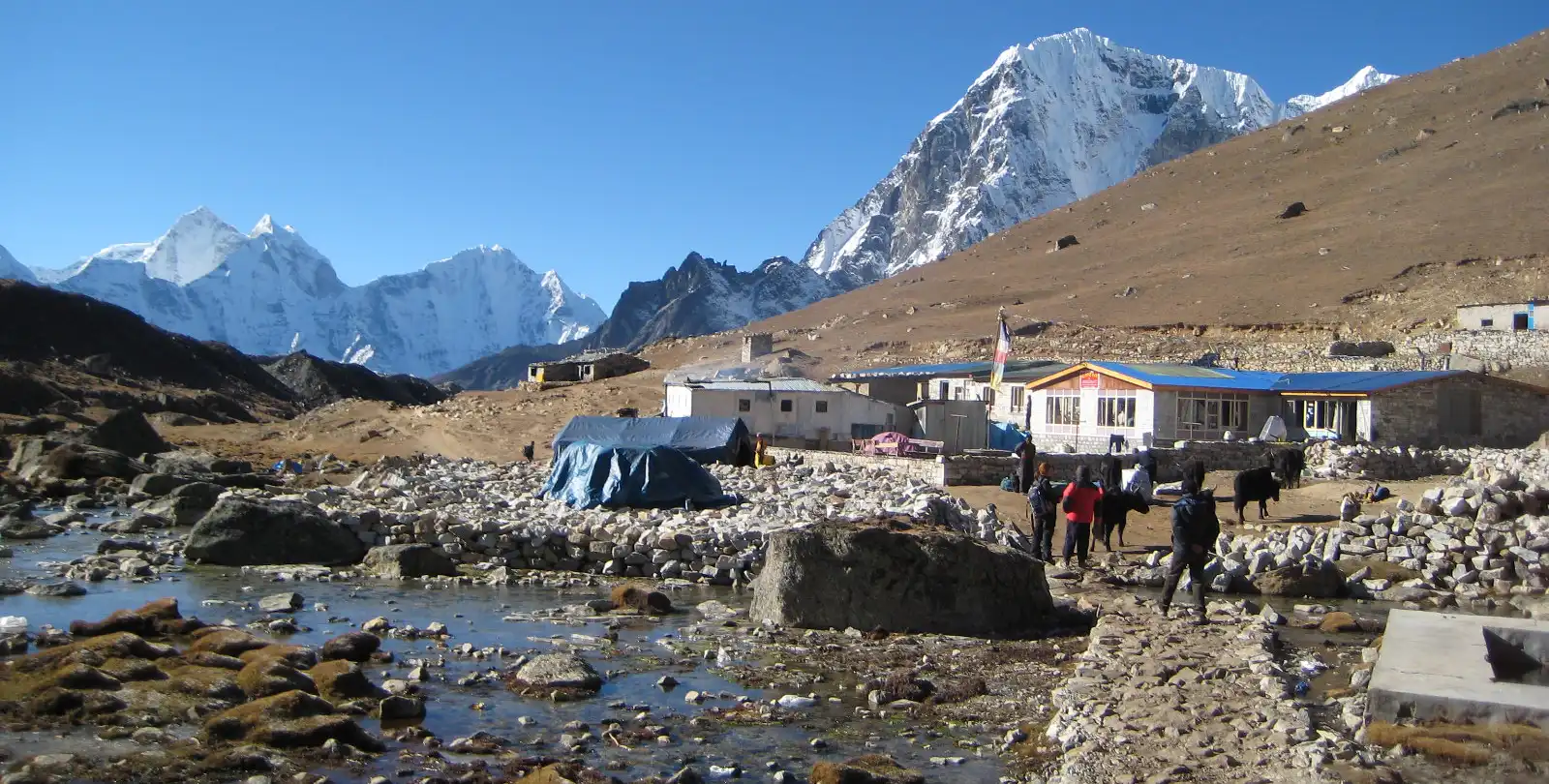
This significant rise in altitude brings substantial physical challenges as the terrain becomes more rugged and the air thinner.
Managing Oxygen Levels and Acclimatization
Oxygen levels significantly drop as trekkers move higher from Dingboche to Lobuche, impacting breathing and endurance. It’s essential to adapt to this decreased oxygen availability through careful acclimatization, which helps prevent altitude sickness. This part of the trek underscores the necessity of frequent acclimatization stops and careful monitoring of health as altitude increases.
Navigating Distance and Managing Time
The trek from Dingboche to Lobuche covers roughly 4.9 miles (7.9 kilometers) in about five hours. This stretch tests not only endurance but also trekkers’ ability to pace themselves. The steep parts of the path require a slow and steady approach to conserve energy and facilitate acclimatization. This critical phase prepares trekkers for the final push toward Everest Base Camp.
6. Lobuche to Gorak Shep
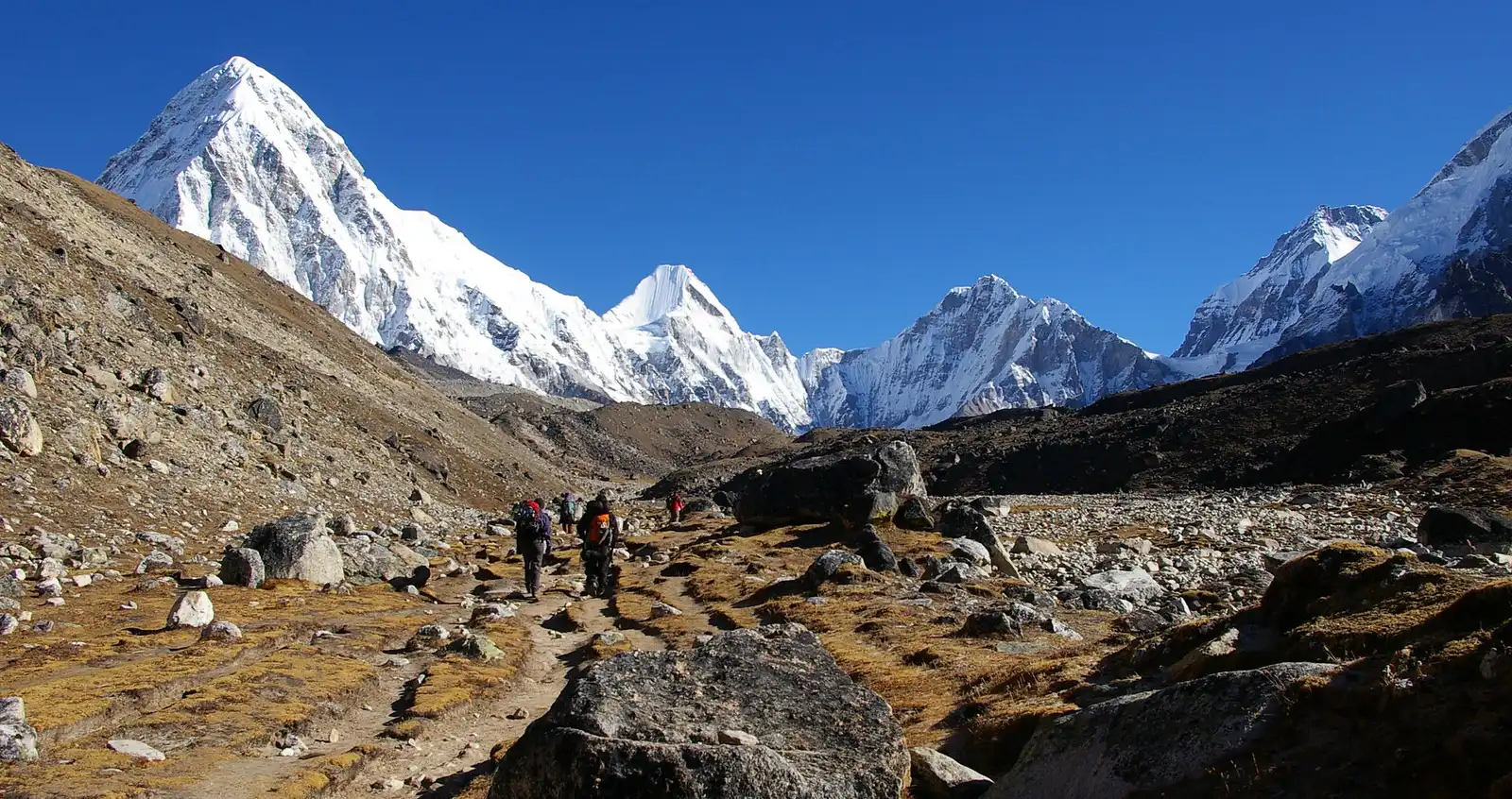
The trek from Lobuche to Gorak Shep raises trekkers from a starting altitude of 16,142 feet (4,920 meters) to 16,863 feet (5,140 meters), achieving an elevation gain of 721 feet (220 meters). Covering a distance of 2.67 miles (4.3 kilometers), this leg of the trek presents substantial challenges due to the high altitude and thinner air.
Oxygen Level
Oxygen levels fall from 56% of the sea level in Lobuche to 54% in Gorak Shep as trekkers climb higher. This reduction in oxygen makes acclimatization stops crucial for adapting to lower air pressure and maintaining health. Trekkers must pace themselves and take necessary breaks to adjust to the diminishing oxygen, ensuring they avoid altitude sickness.
Distance and Time
This segment of the trek takes about three hours to complete despite its shorter distance. The rugged terrain, coupled with lower oxygen levels, intensifies the hike’s difficulty. This crucial stretch not only tests the trekkers’ endurance but also sets the stage for the final approach to Everest Base Camp, blending the thrill of challenge with the excitement of nearing an iconic milestone.
Everest Base Camp Short Trek
Jiri to Everest Base Camp Trek
Everest Base Camp Trek for Beginners
7. Gorak Shep to Everest Base Camp

The final stretch from Gorak Shep to Everest Base Camp elevates hikers from 16,863 feet (5,140 meters) to 17,598 feet (5,364 meters), gaining 735 feet (224 meters) in elevation across 2.17 miles (3.5 kilometers). Though brief in distance, this steep climb and the high altitude make it a formidable challenge, marking the peak achievement of reaching the base of the world’s highest mountain.
Oxygen Level
The oxygen level drops slightly from 54% of the sea level at Gorak Shep to 53% at Everest Base Camp. Despite being a minor reduction, this change significantly impacts hikers due to the extreme altitude. The acclimatization gained through earlier trekking days is vital, helping hikers manage the reduced oxygen levels and avoid altitude sickness.
Distance and Time
The trek from Gorak Shep to Everest Base Camp generally takes about 2 hours one way, totaling about 4 hours and 30 minutes for the round trip. This route challenges hikers physically while offering stunning views of the Khumbu Glacier and surrounding peaks. More than just a physical test, this trek is a deeply moving experience that provides a profound sense of accomplishment alongside breathtaking scenic beauty.
Everest Base Camp Trek altitude chart
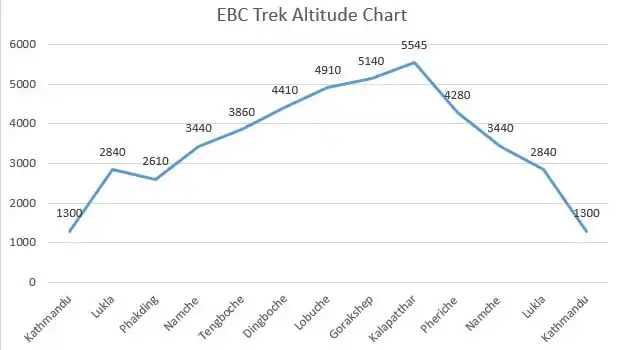
Best month to trek Everest Base Camp
March to May and late September to November are the ideal times for trekking to Everest Base Camp, characterized by clear skies, stable weather, and moderate temperatures that are perfect for trekking through the rugged terrain and enjoying the expansive Himalayan vistas. In the spring, from March to May, the trails come alive with vibrant blooms of rhododendrons and other flora, adding to the route’s scenic charm.
The autumn months of September to November often provide the clearest skies. These months align with the height of the trekking season, creating a lively trail environment filled with bustling teahouses and the friendly spirit of numerous fellow trekkers. The popularity of these seasons means that thousands of trekkers hit the trails, necessitating early bookings for accommodations.
During the peak trekking seasons, despite generally stable conditions, the Himalayas can still experience sudden weather shifts that may lead to emergencies such as heavy snowfalls, avalanches, and storms, especially in the transitional months of March and November. Helicopters play a vital role in emergency rescues and rapid descents from high altitudes, though their availability can be limited by adverse weather conditions, potentially delaying rescue efforts.
The peak seasons also see a surge in helicopter demand, not only for emergency evacuations but also for scenic tours over Everest. Trekkers must secure comprehensive travel insurance that includes coverage for high-altitude rescues and evacuations, providing both safety and financial security in the face of the unpredictable conditions encountered during high-altitude treks.
Altitude Variations in the Everest Base Camp Trek
Trekking in the Everest region is distinguished by its altitude variations, which contribute to making the Everest Base Camp Trek a standout adventure. The trek commences with your arrival at Lukla Airport, positioned at 2,810 meters above sea level.
From there, the altitude fluctuates between 2,500 meters and the peak at Kalapatthar, reaching up to 5,545 meters. Over nine days of walking, plus additional days set aside for essential acclimatization, this trek challenges even seasoned hikers.
Acclimatization and the Path Through the Mountains
Upon landing in Lukla, you immediately notice the difference in the air quality compared to the busy streets of Kathmandu. The trek starts with a descent to Phakding alongside the Dudh Koshi River and then ascends to Namche Bazaar at 3,440 meters.
The path continues to rise through various checkpoints—Tengboche (3,860m), Pheriche (4,280m), Dingboche (4,410m), Dughla (4,620m), Lobuche (4,910m), Gorakshep (5,140m), and finally Everest Base Camp (5,364m) before reaching the highest point at Kalapatthar (5,545m). This vantage point provides breathtaking views of Mt. Everest and the surrounding peaks, making it a crucial part of the trek.
Understanding and Preventing Altitude Sickness
The high altitudes encountered during the Everest Base Camp Trek can pose serious health risks, such as altitude sickness. This condition arises when the body fails to acclimate to the low oxygen levels at higher elevations, with symptoms typically starting at altitudes around 2,400 meters.
Symptoms can include headaches, nausea, vomiting, lightheadedness, and more severe signs like coughing and a change in skin color. With appropriate acclimatization, these symptoms can improve but usually manifest 12 to 24 hours after reaching higher elevations.
Altitude Sickness: Strategies and Precautions
Preventing altitude sickness involves careful pacing and proper acclimatization. It is critical to take your time with the ascent, as doing so can increase the likelihood of illness. Maintaining a slow pace allows the body to adjust to lower oxygen levels. Staying hydrated is equally important, with recommendations to drink up to 5 liters of water daily.
It is advisable to limit sleep elevation increases to between 300 and 500 meters per day. Under a doctor’s guidance, individuals should use medications like Diamox to aid in acclimatization. If symptoms of altitude sickness appear, the best course of action is to descend to a lower altitude quickly.
Conclusion
The Everest Base Camp Trek presents an exceptional adventure, ideally experienced during the stable climates of March to May and September to November. This trek tests trekkers with its changing elevations and necessary acclimatization while offering stunning vistas and rich cultural exchanges.
As you plan for this trek, please make sure to book accommodations well in advance, maintain a steady pace for altitude adjustment, and secure comprehensive travel insurance to cover emergencies. Proper preparation allows you to deeply appreciate the immense rewards of this trek, leaving you with lasting memories of spectacular scenery and meaningful connections.
